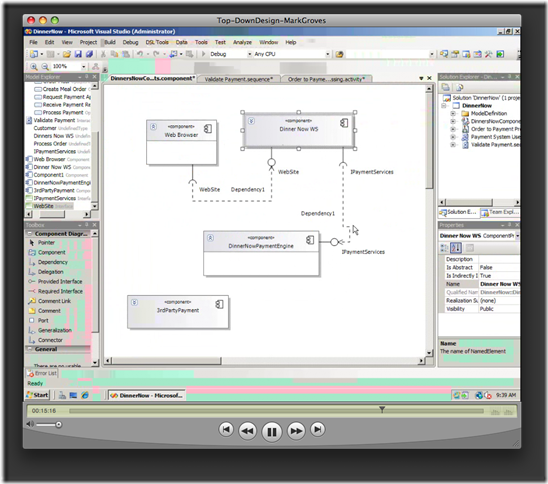UPDATE: 1.3-incubating was removed from our main npanday site again! We forgot to ask the Incubator PMC for a vote, so we had to withdraw the official release.
The direct links provided in this post still work though.
Stay tuned for 1.3.1-incubating to be released soon! This will then be moved to group id ‘org.apache.npanday’ and deployed into Maven Central.
We are pleased to announce our first release of NPanday under Apache Incubator! NPanday moved from Codeplex to Apache Incubator last year.
Don’t mind the “incubator” in the version. NPanday is stable, allthough we hope to move from incubator into a full Apache project as soon as possible.
What is NPanday?
NPanday brings Maven to .NET (and Mono). It offers a set of plugins to build and test projects, and it defines all the necessary packaging types for deploying and resolving .NET artifacts.
Apache Maven comes with a great infrastructure for dependency management, artifact transport, artifact repositories, release flows with scm-integration, and much more. If you don’t know Maven, go read here. Maven is great!
There is also a Visual Studio 2005/2008/2010 Integration for English Visual Studio installations.
Why NPanday, now there is NuGet
Wrong question. Competition is great. Sad though, that at least some of the originators for NuGet didn’t even know about Maven and NPanday.
Maven is an ecosystem grown over almost 10 years. It has much more to offer than auto-download of dependencies. Still I think we need to integrate the dependency-resolving and deployment part with nuget and nuget-gallery (See future plans).
What is new in this release?
NPanday now supports .NET 4.0 and Visual Studio 2010. There has also been major internal improvements. The PAB and UAC directories where removed. Now NPanday uses a clean maven local repository. This also removed the necessity for custom additions to the install and deploy phases – which where duplications of the corresponding maven plugins.
Read the full Release Notes for NPanday 1.3-incubating
What are the future plans?
On short notice we will release 1.3.1-incubating, which already has 9 resolved issues and only one left to be fixed.
At the same time we are working on version 2.0, which is a huge internal change. NPanday uses a internal RDF database where it keeps additional information for artifacts and dependencies. This is obsolete, but lots of work to remove.
We also want to lead NPanday to more .NET-like conventions for directory structures i.e., while still maintaining the Maven-influenced layout. Of course we also try to improve stability, ease of use and documentation.
My agenda for NPanday:
- Integrate with NuGet and NuGet Gallery (nuget.org)
- Support for other test frameworks (MSTest, xUnit, …) through Gallio Test
- Support for localized Satelite Assemblies (Globalization, Multi-language)
We are 4-5 active committers from which 2 work full-time on NPanday as of today. We would really like to get more committers involved. Find out on how to develop NPanday in the NPanday Developer’s Guide.
Where do I get it?
You’ll find everything you need here: NPanday – NPanday Overview
Downloads: NPanday – Download
Current Docs: NPanday – Documentation









